A Bayou Runs Through a Swanky Houston High-Rise: Vaunted Designer Channels Historic Estate in Plush Sky-High Retreat
BY Rebecca ShermanIn the dining room, Singer & Sons table and chairs, attributed to Gio Ponti and Bertha Schaefer. Lindsey Adelman Studio light fixture. Artwork Marilyn Baum. Vintage palm-tree floor lamps by Maison Jansen.
Bodron + Fruit has worked on houses for an elite roster of contemporary art collectors whose preferences for Ruscha and Rauschenberg over Remington and Russell helped propel Dallas into a 21st-century bastion of the arts. Led by interior designer Mil Bodron and architect Svend Fruit, the firm has handled high-profile projects for top art patrons, including the Philip Johnson-designed estate of Naomi Aberly and Larry Lebowitz. Bodron+Fruit has also worked on houses by such acclaimed modernist architects as Frank Lloyd Wright, Antoine Predock, E.G. Hamilton, and Howard Meyer, and designed sleek abodes from the ground up.
It’s an impressive curriculum vitae, but the project closest to Bodron’s heart isn’t rooted in the powerful Dallas arts scene. Instead, it’s a 3,500-square-foot high-rise residence in Houston for a recent widow, whom Bodron has known since his childhood in Monroe, Louisiana. During the ’60s and ’70s, Monroe’s social life often revolved around the winding, cypress-lined Bayou DeSiard.
“Everyone wanted to live on the bayou,” Bodron says. “It’s where the country club and the golf course were, and there were always boats on the water.” The bayou is also where he first met his client and her husband, a businessman and architect, whose lofty modern house had a basement game room, a favored gathering spot for neighborhood kids after football games.
In summers, there was water skiing off the back dock. For Bodron, who tagged along with his older brother, the aquatic recreation offered a chance to peek inside. “None of the other kids paid attention, but I always had one eye checking out the house,” he says.
Filled with sophisticated furnishings from the era — Paul McCobb, Edward Wormley, Billy Baldwin, Philip and Kelvin Laverne, Harvey Probber, and Paul Evans — the Louisiana house was a glamorous introduction to a world of design that would become Bodron’s passion.
“My youth was spent riding my bike looking at houses,” he says. “Riverside Drive was where the historic plantations and big old 1920s and 1930s houses were. I was just as obsessed with the wonderful traditional houses as the modern ones.”
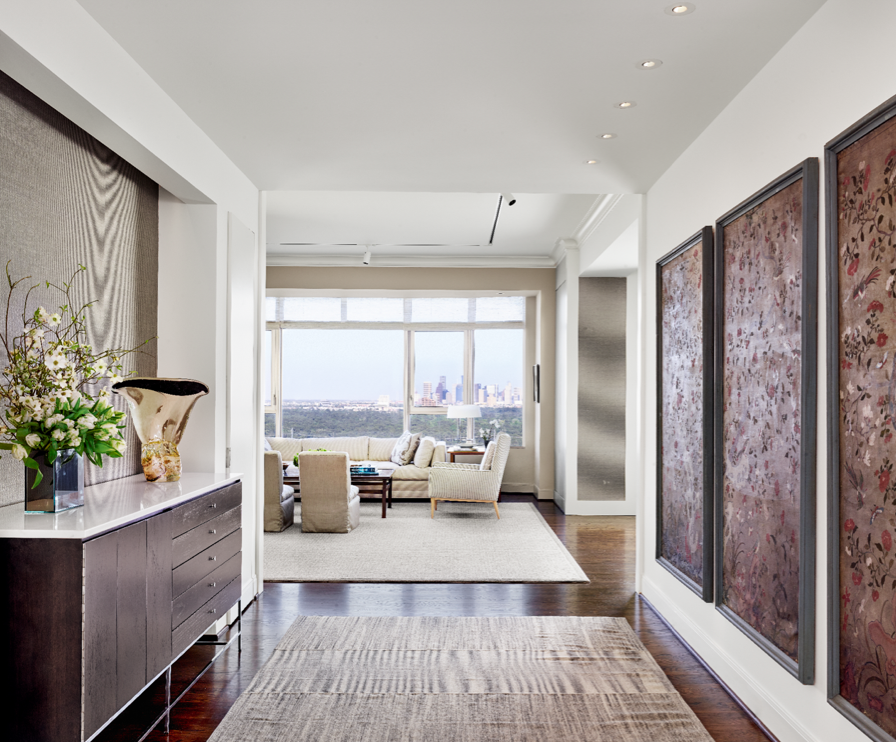
Bodron’s family lived in a 1960s ranch house a short bike’s ride from the levee — his father was a pediatrician, his mother a civic leader and Junior League member. Bodron often pedaled to the library and filled his bike basket with books on houses with floor plans. When older, he accompanied his mother to look at houses for sale, some of them on the bayou. Like others in town, she admired the houses on the tributary, he says.
House-hunting gave Bodron his first lessons in developing floor plans. “I’d go home and get my ruler out and paper and try to draw the houses to scale,” he says.
As part of a class assignment in high school, Bodron interviewed the aforementioned businessman and architect for a paper he was writing. So began the start of a friendship that lasted until the architect’s death in 2012. When his widow decided to sell the house on the bayou and move to the Villa D’Este high-rise in Houston, where her daughter also had an apartment, she hired Bodron + Fruit to remake her new home
Her only request? Use as many of the original furnishings as possible. Bodron was only happy to oblige.
Maybe it’s his Southern heritage, but Bodron’s interiors are known for being as comfortable as they are sleek — a balance that takes a lot of advance planning. “The first thing I always ask clients is how they want their house to work, not what they want it to look like,” he says.
Furniture plans are finalized long before clients ever sign off on purchases. In this case, it meant measuring, photographing, and cataloging each piece of furniture from the house on the bayou, then working with the scale and shapes on paper. “One of my specialties is figuring out what can fit,” Bodron says.
Meanwhile, the envelope of the 15-year-old Villa D’Este apartment underwent substantial remodeling, including the entry, kitchen, master bath, bedroom, and closets, along with new lighting and paint colors. Because she wanted the option to enclose the dining room from the living area, Bodron created four textured sliding glass doors. The original classical panelized columns that ordered the space were retained.
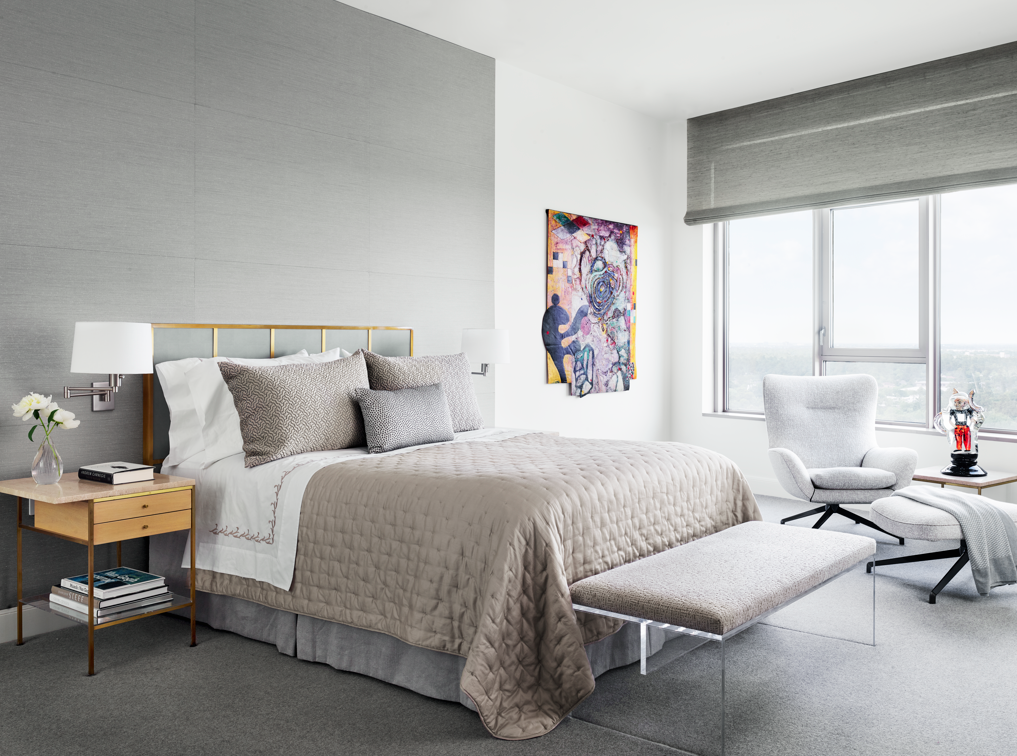
“Many high-rises are big boxes in the sky without architecture, so sometimes it’s nice to use moldings and decorative light fixtures,” he says. Case in point: the Ingo Maurer pendant that was purchased for the reception area. Constructed of three layers of silver-leaf tea paper, it’s a lustrous, sculptural element. The owner likes texture, so Bodron used plenty of Schumacher wall coverings, including in the entry niche and on all the decorative pilasters, which had previously been mirrored.
In the dining room, Bodron opted to keep two monumental palm-tree floor lamps left by the previous owners, because they “screamed of being something really good,” Bodron says. It was a lucky find: After doing some research, Bodron discovered the lamps are rare pieces by French furniture maker Maison Jansen.
Armed with a solid furniture plan, Bodron determined that much of his client’s vintage pieces would work in the new residence, including a nine-foot custom Widdicomb sofa, two pairs of Billy Baldwin slipper chairs, a matching pair of McCobb lounge chairs, a massive Philip & Kelvin LaVerne cocktail table, and a dining table attributed to Gio Ponti and Bertha Schaefer.
Carefully refinished and reupholstered in such luxurious fabrics as Romo, Great Plains, Bergamo, and Zimmer + Rohde, the client’s original furniture gleamed back to life. “I know it’s my old furniture, but it feels brand-new,” she says. “Mil got everything right — the colors, the fabrics, the wall paints. Not only did we get along, but he understood what I wanted. I think it’s because he’d seen how I’d lived for so many years.”
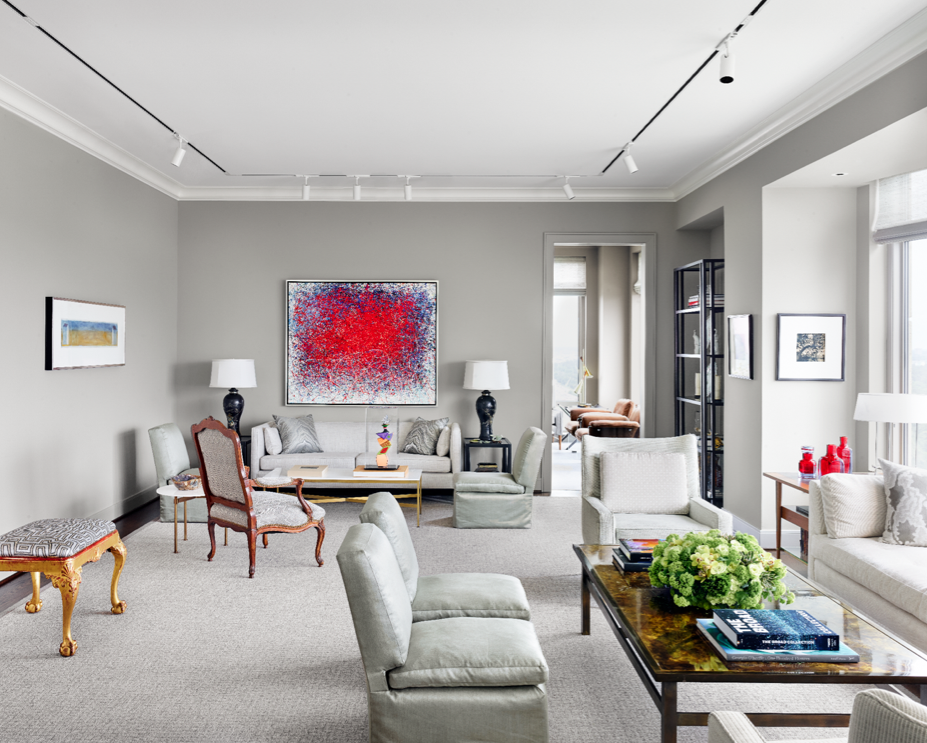
Bodron purposely kept the rooms’ scale even, so that one piece wouldn’t dominate over another. “I wanted it to feel like a salon in New York,” he says of his vision to create a space where people feel the overall chic vibe, rather than focus on any individual piece. Like most of Bodron’s projects, these subtle rooms reveal their details over time.
His client, who sometimes hosts groups of 25 for cocktail buffets after the ballet, theater, or symphony, says guests especially love being in the living area with its multiple seating areas. “Everybody who walks in says, ‘Oh my goodness, this is such a comfortable room — so warm,’ ” he says.
The apartment may be filled with classic furnishings from the mid-century era, but rather than feeling like a period piece frozen in time, Bodron has created a youthful dwelling that’s sophisticated and of the moment, just like its owner. Says the client: “I grew up with a mother who was always up to date. She loved Art Deco and mid-century when everyone else in Monroe was into Colonial and antiques. Plus my husband was a student of the Bauhaus, so modern furniture was what we bought. People thought we were kind of crazy.”
For Bodron, the story comes full circle: A few years ago, his parents bought a house on the bayou, designed by the client’s late architect husband. It’s an International-style house interpreted with old Louisiana brick and fir siding, says Bodron, who helped furnish it with classic modern pieces, such as Robsjohn-Gibbings and Knoll.
“It was always,” he says, “my favorite house in town.”
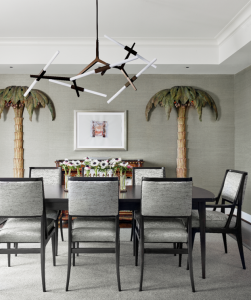

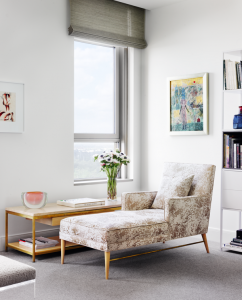

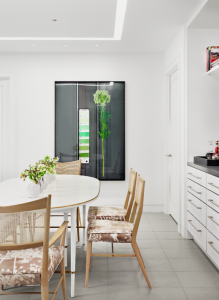
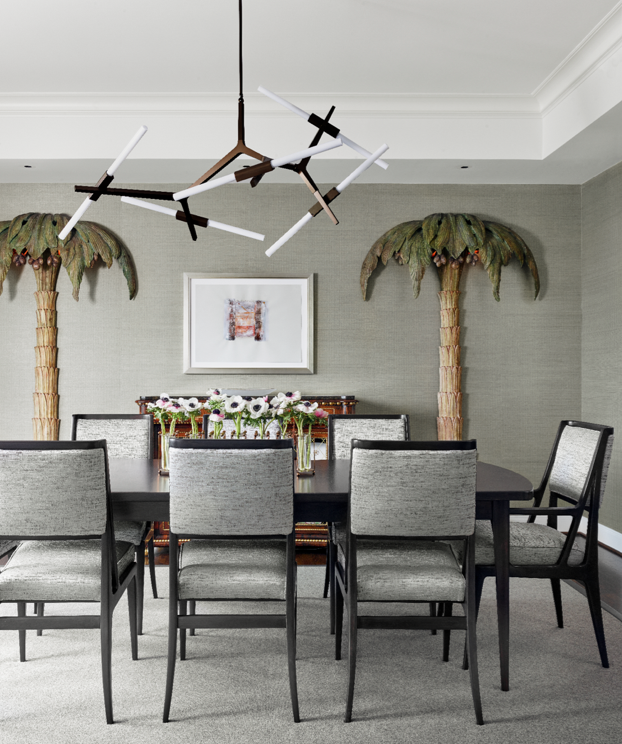
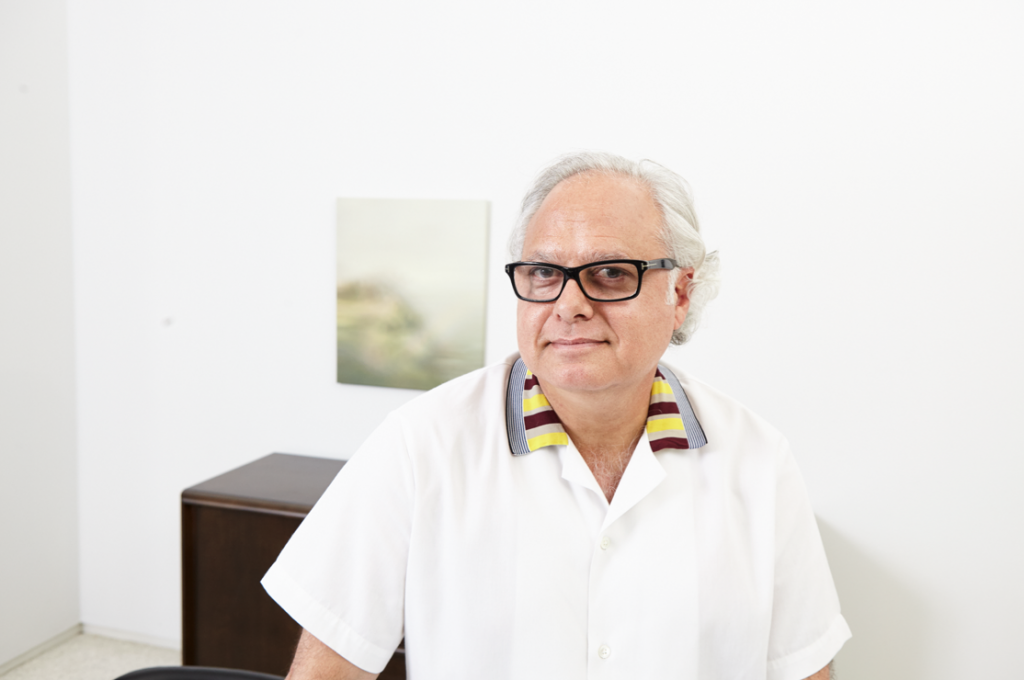
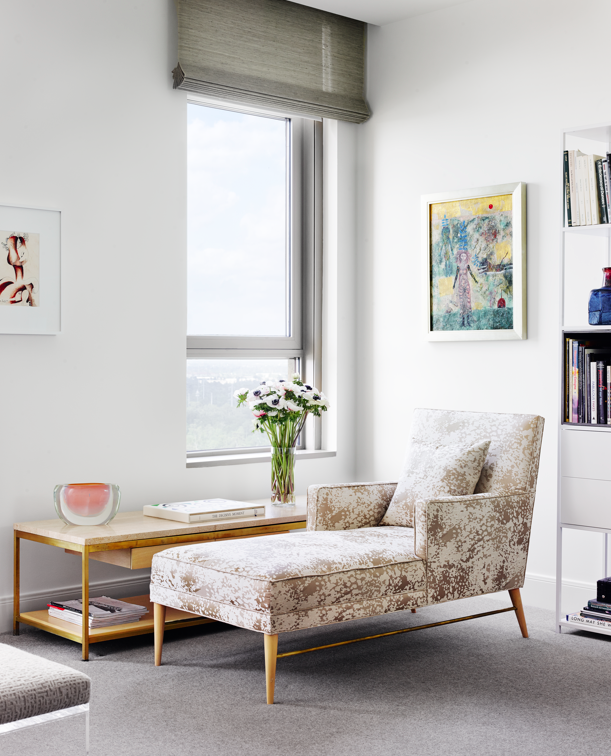
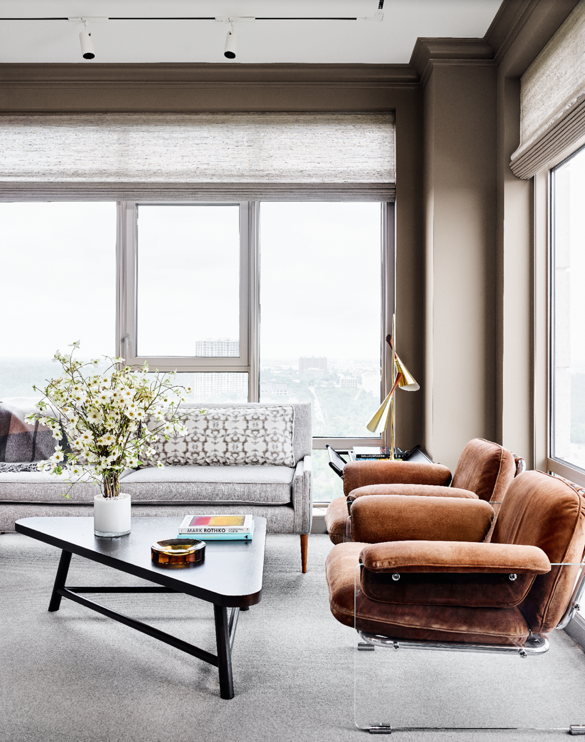
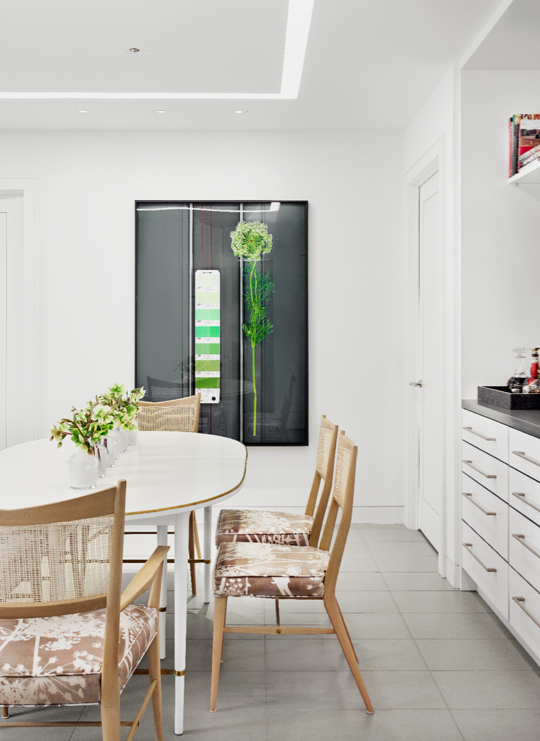


_md.png)
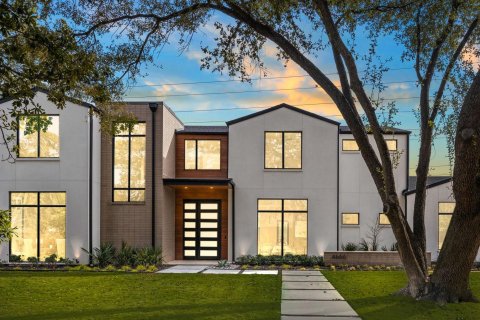



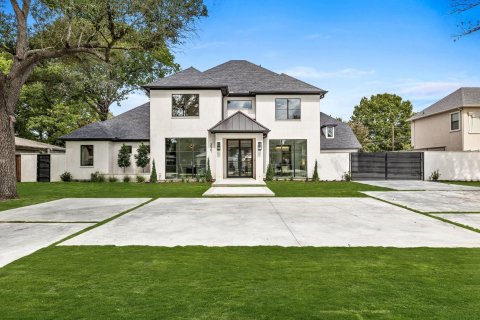



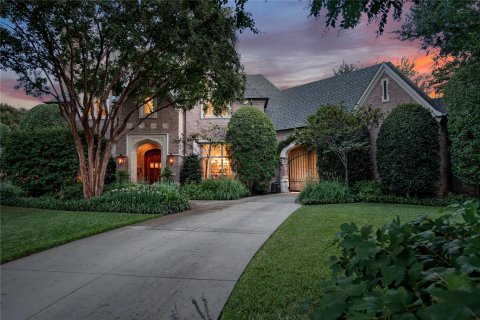

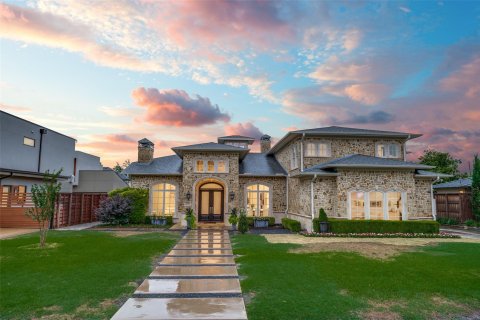





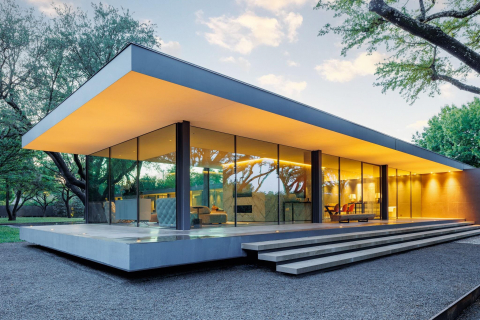

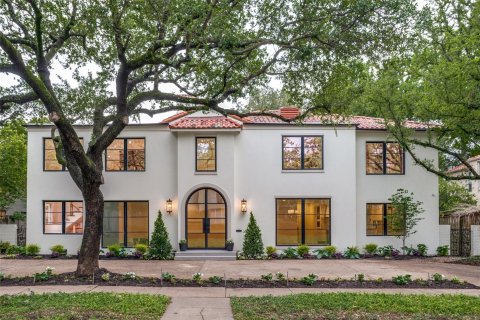
_md.jpeg)
